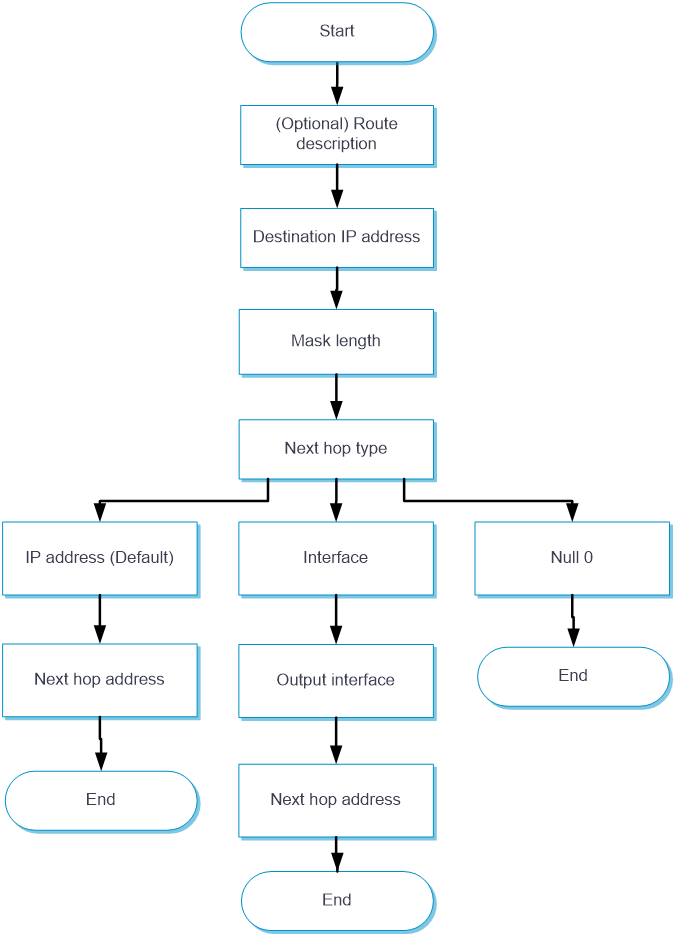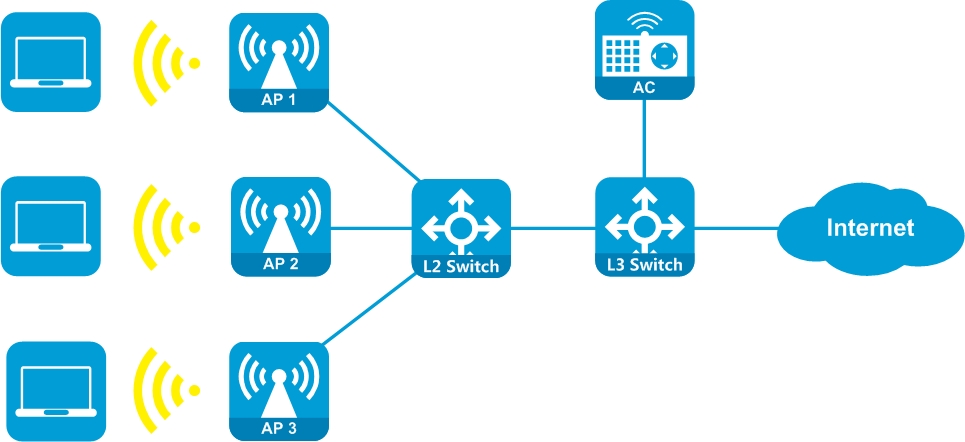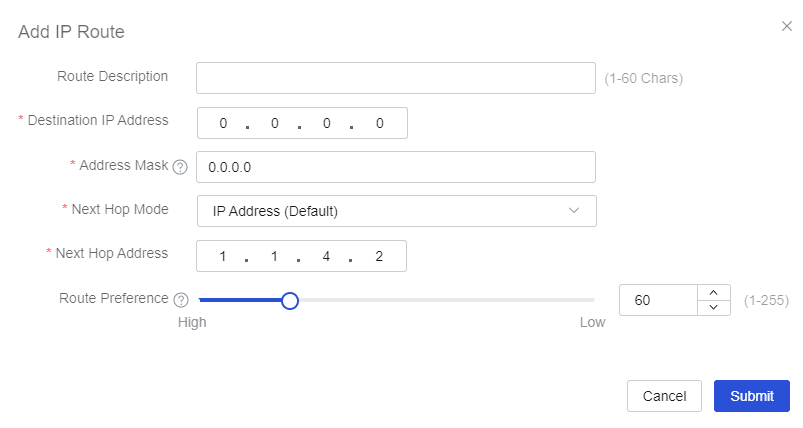IP route
This help contains the following topics:
Introduction
Routes are path information used to guide packet forwarding. This feature allows you to view the activate routes on the device, and add, edit, or delete static routes.
IPv4 routing table
Routing devices select routes from the routing table. At least one routing table is saved in each routing device, which contains routes discovered by various routing protocols. Routes in a routing table fall into three categories by origin:
Direct routes—Routes discovered by data link protocols, also known as interface routes.
Static routes—Static routes are manually configured. Static routes are easy to configure and require less system resources. They work well in small, stable networks with simple topologies. They cannot adapt to network topology changes. If a topological change occurs in the network, the network administrator must modify the static routes manually.
Dynamic routes—Routes that are discovered dynamically by routing protocols.
Application scenarios
Static routes are suitable for networks with relatively simple topologies. Configuring and using static routes wisely helps improve network performance and guarantee bandwidth for critical applications. When the network topology is complex or changes frequently, as a best practice, use dynamic routing protocols to maintain routing information.
Restrictions and cautions
Static routes cannot adapt to network topology changes. If a fault or a topological change occurs in the network, the network administrator must modify the static routes manually. When the network topology is complex, static route configuration and maintenance will become more complex and difficult. As a best practice, do not use static routes in such cases.
Static route configuration guide
Analysis
Configure static routes as shown in the following figure:

Procedure
From the left navigation pane, select Configure > Network Config > IP Route > IPv4 Static Route.
Click Add to access the Add IP Route page.
Table-1 Parameters for configuring the static route
Parameter
Description
Route Description
Description information of the static route, a string of 1 to 150 characters including special characters such as spaces. The string cannot contain question marks (?).
Destination IP Address
Dotted decimal format.
Address Mask
The value range is 0 to 32.
Next Hop Mode
IP Address (Default): IP address of the next hop, in dotted decimal notation.
Interface: Packets destined to the specified network will be forwarded through this interface.
Null 0: Packets destined to the specified network will be all discarded.
Route Preference
Priority of the static route. The value range is 1 to 255, and the default value is 60. Specifying the same priority for different routes to the same destination IP address enables load sharing among the routes, while specifying different priorities enables route backup. The optimal route is the one with the highest priority (with the smallest value).
Click Submit.
Example: Configure static routes
Network configuration
Configure a static route on the AC to achieve Layer 3 connectivity between the AC and other devices.
Figure-1 Network diagram

Procedure
Configure basic AC settings
Configure IP addresses for interfaces. (Details not shown.)
Configure the APs to come online and complete service configuration such as wireless service settings. (Details not shown.)
Configure a static route
From the left navigation pane, select Configure > Network Config > IP Route > IPv4 Static Route.
Click Add. On the Add IP Route page that opens, create an IPv4 static route entry on the AC. Specify the destination IP address as 0.0.0.0, mask length as 0, next hop mode as IP address (default) and next hop as 1.1.4.2 (interface address of the Layer 3 switch) for the static route. Use this route to match traffic destined to any other networks.
Figure-2 Configuring a static route

Verify the configuration
After completing the previous configuration, you can ping the IP addresses of other devices on the AC.
# Ping the interface address of Host A on the AC verify the reachability.
<Sysname> ping 1.1.2.2
Ping 1.1.2.2 (1.1.2.2): 56 data bytes, press CTRL_C to break
56 bytes from 1.1.2.2: icmp_seq=0 ttl=254 time=2.137 ms
56 bytes from 1.1.2.2: icmp_seq=1 ttl=254 time=2.051 ms
56 bytes from 1.1.2.2: icmp_seq=2 ttl=254 time=1.996 ms
56 bytes from 1.1.2.2: icmp_seq=3 ttl=254 time=1.963 ms
56 bytes from 1.1.2.2: icmp_seq=4 ttl=254 time=1.991 ms
--- Ping statistics for 1.1.2.2 ---
5 packet(s) transmitted, 5 packet(s) received, 0.0% packet loss
round-trip min/avg/max/std-dev = 1.963/2.028/2.137/0.062 ms